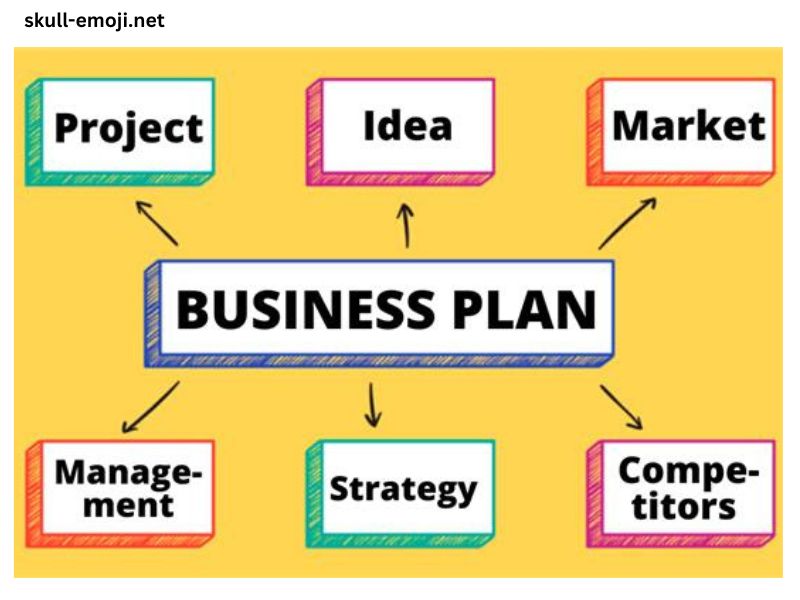Creating a business plan is a crucial step in establishing a successful business. Whether you’re a startup entrepreneur seeking funding or a seasoned business owner looking to refine your strategy, a well-crafted business plan serves as a roadmap for your venture. This guide will provide you with a step-by-step approach to creating a comprehensive business plan that can help you attract investors, secure loans, and steer your business toward success.
Understanding the Importance of a Business Plan
A business plan is a formal document that outlines your business objectives, strategies, and financial forecasts. It serves several important purposes:
- Guiding Your Business: A business plan acts as a roadmap, helping you navigate the challenges and opportunities that come your way. It forces you to think critically about every aspect of your business, from marketing and sales to operations and finance.
- Attracting Investors: Investors and lenders will likely require a business plan before they consider providing funding. A well-structured plan demonstrates that you have thoroughly thought through your business idea and have a clear strategy for achieving your goals.
- Setting Objectives: A business plan helps you set realistic and measurable goals. It allows you to track your progress and make adjustments as needed.
- Minimizing Risks: By identifying potential challenges and risks in advance, you can develop strategies to mitigate them, reducing the likelihood of costly mistakes.
Components of a Business Plan
A typical business plan consists of several key sections, each serving a specific purpose. Here’s a breakdown of what each section should include:
a. Executive Summary
The executive summary is the first section of your business plan, but it should be written last. It provides a concise overview of your business and highlights the most important points from the rest of the plan. A good executive summary should include:
- Business Name and Location: The name of your business, its location, and any relevant contact information.
- Mission Statement: A brief statement that encapsulates your business’s purpose and values.
- Products or Services: A short description of what your business offers.
- Market Opportunity: A summary of the market need that your business addresses.
- Financial Highlights: An overview of your financial projections, including expected revenue and profitability.
- Funding Requirements: If you’re seeking investment, specify the amount of funding you need and how you plan to use it.
b. Business Description
In this section, provide a detailed description of your business. This should include:
- Business Structure: Specify whether your business is a sole proprietorship, partnership, LLC, or corporation.
- Industry Overview: Describe the industry your business operates in, including trends, growth potential, and competitive landscape.
- Business Objectives: Outline your short-term and long-term goals.
- Unique Selling Proposition (USP): Explain what sets your business apart from competitors and why customers should choose your product or service.
- Location and Facilities: Describe your business’s physical location and any facilities or equipment you have or plan to acquire.
c. Market Research and Analysis
Market research is critical for understanding your target market and developing effective strategies. This section should cover:
- Target Market: Identify your ideal customers, including demographic information such as age, gender, income level, and location.
- Market Size and Growth: Estimate the size of your target market and its potential for growth.
- Customer Needs and Behavior: Analyze your target market’s needs, preferences, and buying behavior.
- Competitor Analysis: Identify your main competitors, their strengths and weaknesses, and how you plan to differentiate your business.
- Market Trends: Discuss any relevant trends in your industry that could impact your business, such as technological advancements, regulatory changes, or shifts in consumer preferences.
d. Organization and Management
This section outlines the organizational structure of your business and introduces the key members of your team. Include:
- Organizational Structure: A chart or description of your company’s structure, including the roles and responsibilities of each team member.
- Management Team: Profiles of your leadership team, highlighting their experience, skills, and qualifications.
- Ownership Structure: Details of the ownership of the business, including information about shareholders, partners, or investors.
- Advisors and Board Members: If applicable, mention any advisors or board members who contribute to your business’s success.
e. Products or Services
In this section, provide a detailed description of the products or services your business offers. Include:
- Product/Service Description: A clear and concise description of each product or service you offer.
- Unique Features: Highlight any unique features or benefits that differentiate your offerings from competitors.
- Pricing Strategy: Explain your pricing model and how it aligns with your target market’s expectations.
- Product Lifecycle: Discuss the lifecycle of your products or services, including any plans for future development or updates.
- Intellectual Property: If applicable, mention any patents, trademarks, or proprietary technology associated with your products or services.
f. Marketing and Sales Strategy
Your marketing and sales strategy outlines how you plan to attract and retain customers. This section should include:
- Marketing Plan: A comprehensive plan detailing your marketing activities, including advertising, promotions, public relations, and digital marketing.
- Sales Strategy: Describe your sales process, including how you plan to generate leads, close sales, and build customer relationships.
- Distribution Channels: Explain how you will deliver your products or services to customers, whether through physical stores, online platforms, or other channels.
- Customer Retention: Outline your strategies for retaining customers, such as loyalty programs, customer service initiatives, or subscription models.
g. Operations Plan
The operations plan details the day-to-day operations of your business. This section should cover:
- Production Process: Describe how your products or services are produced, including any suppliers, manufacturing processes, or quality control measures.
- Facilities and Equipment: List the facilities and equipment needed to operate your business, including any plans for future expansion or upgrades.
- Supply Chain Management: Discuss how you will manage your supply chain, including sourcing, inventory management, and logistics.
- Technology and Systems: Mention any technology or systems that will be used to manage operations, such as software for inventory management, customer relationship management (CRM), or financial reporting.
h. Financial Plan
The financial plan is one of the most critical sections of your business plan. It provides a detailed overview of your business’s financial projections and funding requirements. Include:
- Startup Costs: A breakdown of the costs associated with starting your business, including equipment, inventory, marketing, and legal fees.
- Revenue Projections: Forecast your expected revenue over the next three to five years, based on your market research and sales strategy.
- Profit and Loss Statement: A projected profit and loss statement (P&L) that outlines your expected revenue, expenses, and net profit over time.
- Cash Flow Statement: A cash flow statement that details the inflow and outflow of cash in your business, ensuring you have enough cash to cover operating expenses.
- Balance Sheet: A projected balance sheet that provides a snapshot of your business’s financial position, including assets, liabilities, and equity.
- Break-Even Analysis: Calculate your break-even point, which is the level of sales needed to cover your costs.
- Funding Requirements: If you’re seeking investment, specify the amount of funding you need, how you plan to use it, and the expected return on investment (ROI) for investors.
i. Appendix
The appendix is an optional section that includes any additional information that supports your business plan. This might include:
- Resumes of Key Team Members: Detailed resumes of your management team and key staff members.
- Product Photos or Diagrams: Visual representations of your products or services.
- Legal Documents: Copies of legal documents, such as business licenses, contracts, or intellectual property agreements.
- Market Research Data: Any additional market research data or reports that support your analysis.
Tips for Writing an Effective Business Plan
- Keep It Concise: While your business plan should be comprehensive, it should also be concise. Avoid unnecessary jargon or lengthy explanations.
- Use Clear and Simple Language: Write in clear, simple language that is easy to understand. Avoid technical terms unless they are essential to your business.
- Be Realistic: Your financial projections and business objectives should be realistic and achievable. Overly optimistic forecasts can undermine your credibility.
- Tailor Your Plan to Your Audience: Consider who will be reading your business plan and tailor it to their needs. For example, investors may be more interested in your financial projections, while lenders may focus on your ability to repay a loan.
- Update Your Plan Regularly: A business plan is a living document that should be updated regularly as your business evolves. Review and revise your plan at least once a year to ensure it remains relevant.
Conclusion
Creating a business plan is an essential step in building a successful business. It forces you to think critically about your business idea, develop strategies for success, and identify potential challenges. By following the steps outlined in this guide, you can create a comprehensive business plan that serves as a roadmap for your venture and helps you achieve your business goals. Whether you’re seeking investment, securing a loan, or simply planning for the future, a well-crafted business plan is an invaluable tool that can set you on the path to success.


